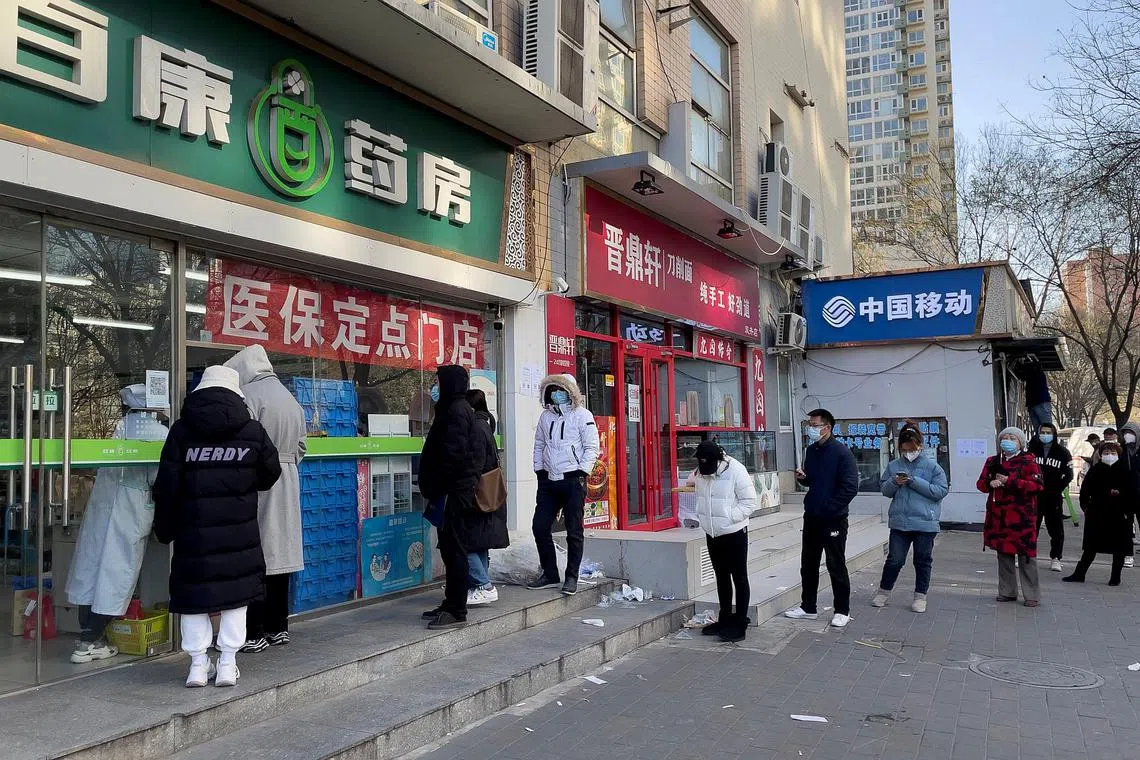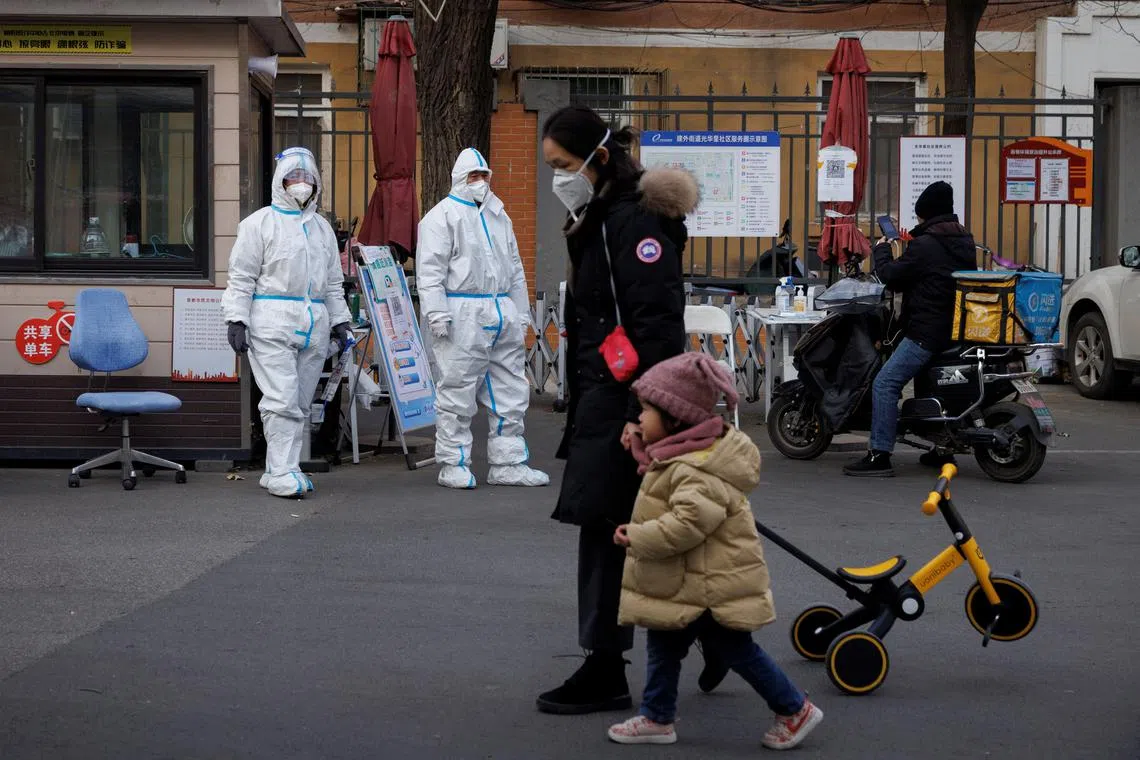Significant easing nationwide spells end to China’s zero-Covid policy
Sign up now: Get insights on Asia's fast-moving developments

China's National Health Commission issued 10 guidelines that continue with the easing of some curbs, on Dec 7, 2022.
PHOTO: REUTERS
Follow topic:
BEIJING - In a major shift signalling an end to its controversial zero-Covid policy,
The country’s top health body, the National Health Commission (NHC), on Wednesday issued 10 guidelines that continue with the easing of some curbs announced a month earlier.
The most significant move in this latest round of easing is the dismantling of the requirement for all positive cases to go into centralised quarantine or to a hospital, which has been a bugbear among the populace. In a previous iteration of the policy, even close contacts of those who were in close proximity with infected cases were also placed in centralised quarantine.
The policy changes come after days of demonstrations across major cities from Beijing and Shanghai to Guangzhou and Urumqi, and scores of sporadic protests in locked-down residential communities, as the country continues to battle its biggest outbreak since the start of the pandemic three years ago.
Some local authorities began to implement these new measures from last week while others held back, leading to confusion and anger over the inconsistent execution across districts and residential communities.
Lockdowns have also taken their toll on the economy, as exports contracted 8.7 per cent in November from a year earlier, marking their worst showing since February 2020. Beijing said on Wednesday that it would seek to turn around its limping economy and pursue growth again in the coming year.
Daily new infections have been falling since a peak of 40,000 in late November. The NHC reported 25,321 new infections nationwide for Tuesday, of which 20,912 were asymptomatic.
On Wednesday, the commission said regular testing will no longer be necessary except for “high-risk personnel”, while entry into public venues – other than hospitals, childcare facilities, nursing homes and primary and secondary schools – no longer requires proof of a negative test result or a green health code.
Neither will they be needed for travel across provinces, which up till now has meant a tiresome procedure of testing and quarantines, and the uncertainty of entry. Searches for flights on China’s biggest travel platform CTrip jumped 160 per cent on news of the relaxation, especially for the Chinese New Year period in late January, reported Chinese media.
Other guidelines announced include warnings against the blocking of fire exits and entrances to buildings and against extended lockdowns if there are no new infections after five consecutive days, and that pharmacies must not restrict the purchase of over-the-counter cough, antiviral and fever medication.

Regular testing will no longer be necessary except for “high-risk personnel”.
PHOTO: REUTERS
At an hour-long press conference on Wednesday afternoon, health officials did not mention “dynamic zero-Covid” at all, and made clear that the significant easing of China’s policy was not because of the protests.
“This fine-tuning of the policy is not letting go completely with no prevention. It is a proactive liberalisation and not a reactive one,” said top epidemiologist Liang Wannian, who heads the government’s expert panel on Covid-19.
It is based on the characteristics of the current circulating strain of the virus which is less pathogenic, and also “an evaluation of the dynamics of the current situation and existing measures”.
The government will continue to “take small steps” and improve the policy, he said.
The release of the latest round of guidelines coincides with President Xi Jinping’s state visit to Saudi Arabia
China’s insistence on the zero-Covid policy for the past three years has kept infection numbers low, but also battered its economy because of disruptions caused by lockdowns and other restrictions on movement.
Economists project the world’s second-largest economy will grow by under 3 per cent in 2022, nowhere near the 5.5 per cent it had set for itself in March.
In a high-level meeting chaired by President Xi on Tuesday, Chinese leaders vowed to keep fiscal policy active and monetary policy prudent while boosting market confidence.
“We should seek growth while prioritising stabilty,” said a readout of the meeting released by Xinhua News Agency on Wednesday.
Economists expect policymakers to set a GDP target of at least 5 per cent in 2023, as they focus on the country’s economic recovery while unwinding its punishing Covid-19 measures.


